Carved alabaster plaque with gold
highlights in a very beautiful original "pastilla" frame
decorated with interlacing. This bas-relief is an example of the very
typical artistic industry that flourished in Mechelen from the
mid-16th century to the first third of the 17th century. The
production of alabaster pieces is linked to the Flemish Renaissance
period. Unlike the somewhat earlier domestic altarpieces, the carved
devotional reliefs generally date from around 1600.
These alabaster works depict a variety
of themes: they include the lives of saints, mythological scenes,
allegories, historical figures, and portraits.
Here, Saint Anthony of Padua is
depicted as a monk with benevolent features, carrying the Infant
Jesus kneeling over the book of the Gospels; his head slightly bowed
as if watching over him.
In his other hand, he holds a crucifix,
the object of his adoration and a symbol of resurrection and hope.
The Saint is dressed in a Franciscan habit tied with a three-knotted
cord.
The composition is set against a
landscaped background featuring a tree and what appears to be a city
or a church.
Saint Anthony is particularly popular
in the Catholic tradition. It is to him that we address our prayers
when we wish to find a lost object or bring a loved one who has lost
his way back to the right path. By extension, he has become the
patron saint of lost causes, prayed to in particular by the poor, the
shipwrecked, the oppressed, and the elderly. Over time, Saint Anthony
has also become the protector of pregnant women and those suffering
from infertility. In popular devotion, it is customary to call upon
Saint Anthony to help find lost objects using this well-known phrase: "Saint Anthony of Padua, great
thief, great thief, return what is not yours !"
Dimensions with frame: H. 26 cm x W.
21.5 cm
Alabaster dimensions: H. 14.5 cm x W.
11 cm
Mechelen, Flanders
Alabaster with gold highlights
Early 17th century
Small loss at the base of the
bas-relief



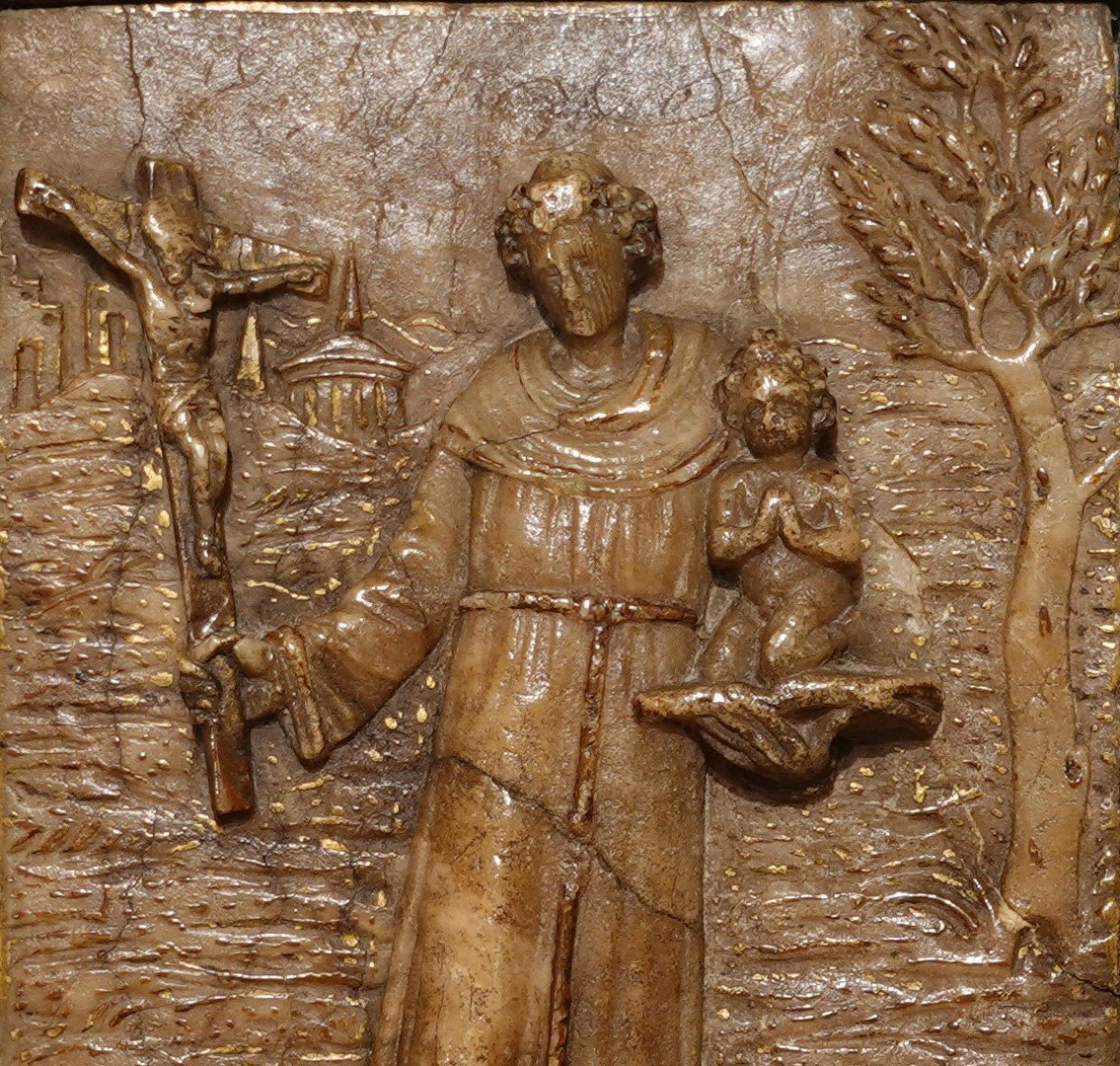
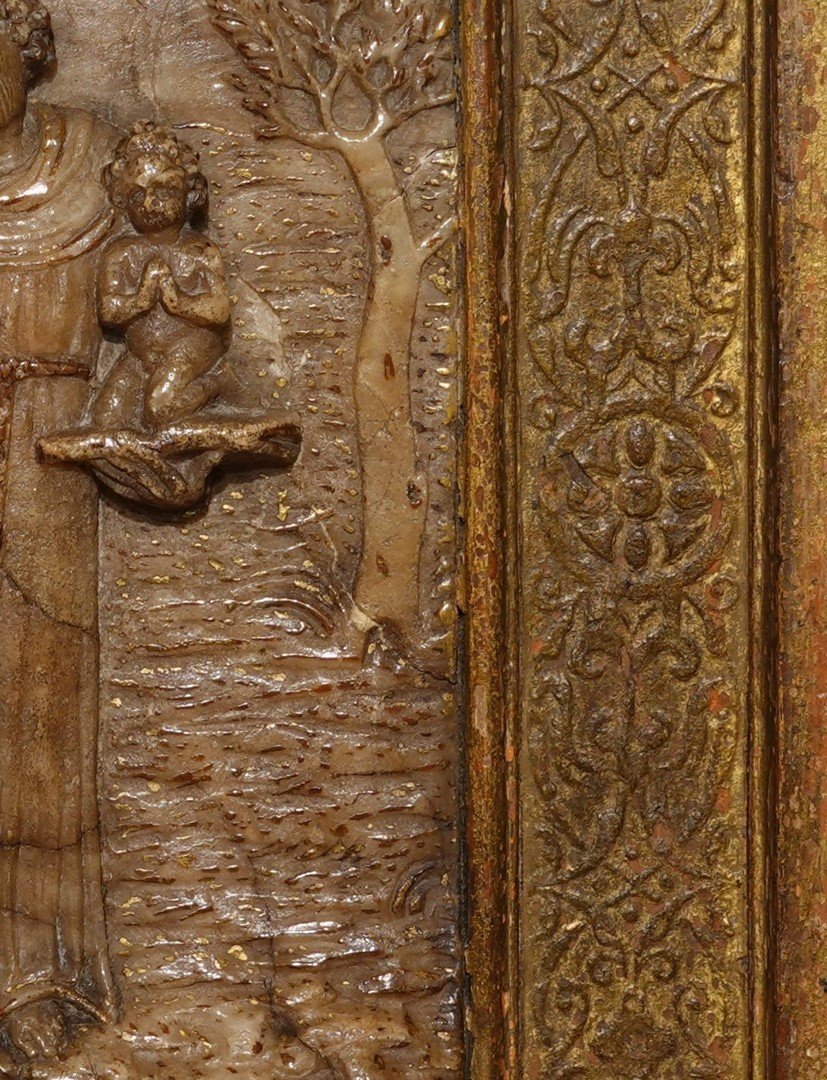







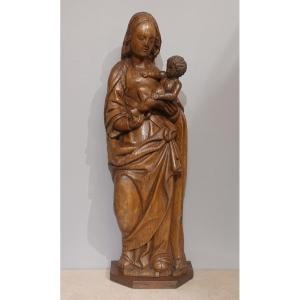














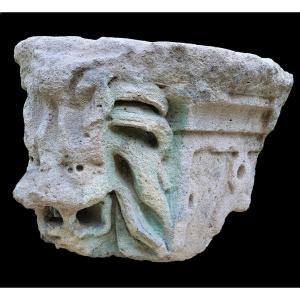

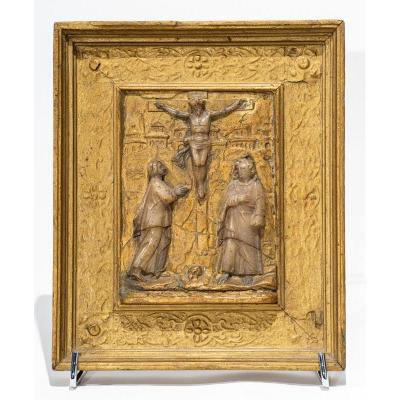





 Le Magazine de PROANTIC
Le Magazine de PROANTIC TRÉSORS Magazine
TRÉSORS Magazine Rivista Artiquariato
Rivista Artiquariato